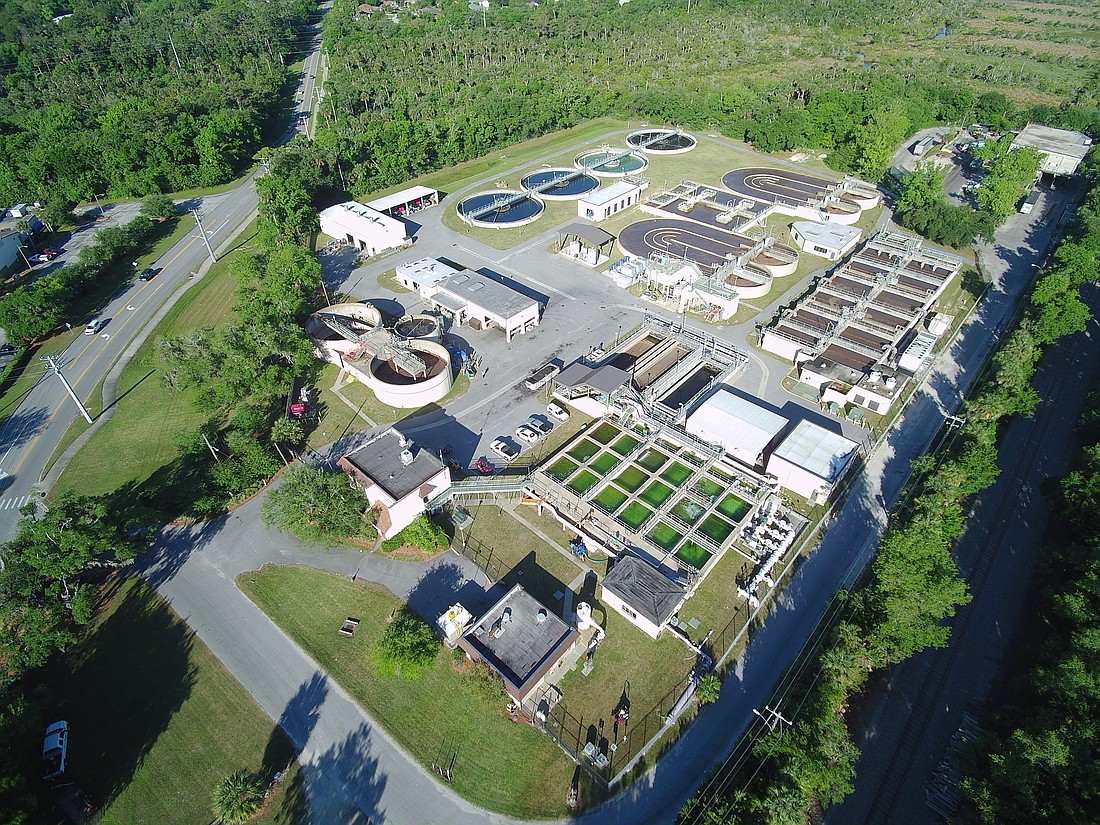- April 18, 2024
-
-
Loading

Loading

Though Ormond Beach is still in the bidding stage for the design and permitting of the first phase of the septic-to-sewer conversion in the north peninsula, some residents of that area wonder if the city's wastewater treatment plant can handle their sewage.
Today, the plant treats about 4.6 million gallons of sewage per day. Adding the north peninsula all at once would bring in an estimated 3.5 million gallons, give or take, said City Manager Joyce Shanahan. With the current facility having a capacity of 8 million gallons per day, barring any future improvements that could expand that, the city is confident it can handle the north peninsula.
The Florida Department of Environmental Protection has defined guidelines about capacity, Shanahan said. Based on capacity analysis reports, the DEP could require municipalities to initiate planning, design and construction of new facilities.
“[DEP is] never going to let you bump up against your totals without giving you notifications that you have to expand the capacity of your plant," Shanahan said.
Some residents affected by the proposed septic-to-sewer conversion in the north peninsula have toured the city's wastewater treatment plant. One of those is Rashida Hakeem, who is also part of the Ormond By the Sea Association. Personally, she said the plant appeared to be run competently, and that she doesn't doubt it can handle its current sewage loads.
But when it comes to Ormond-by-the-Sea, Hakeem said she still has doubts.
“I’m saying that I at all know for a fact they don’t have the capabilities, but many of us are concerned as to whether they do," Hakeem said, adding that they don't know how old the pipes are that run from the mainland to the north peninsula for the city's current sewer customers.
She said that the conversion is meant to help the environment, and at this time, Ormond-by-the-Sea residents aren't seeing "strong reasons" to believe converting to city sewer won't cause more environmental issues later down the road.
Some north peninsula residents have voiced concerns over sewage spillages, and while Ormond Beach has seen 7 such incidents in the last two years, Shanahan said they were small and resolved quickly.
The most recent one occurred on Aug. 15 at the Breakaway Trails Pumping Station. There was a power outage that disabled the pumps, and 50 gallons of sewage was absorbed into the ground, which was disinfected. A few months earlier, between 200-300 gallons of sewage spilled into a dry retention area at the Fisherman's Landings apartment complex on April 18 due to a grease clog. In that incident, 50 gallons were recovered and the rest seeped into the ground, which was disinfected. City crews also fixed the blockage.
In 2017, a leak from a cast iron pipe force main near Granada Plaza at 205 E. Granada Blvd., serving a private lift station, leaked about 50,000 gallons over a number of months. The pipe was repaired and storm drain disinfected.
In the past 10 years, the city has experienced 26 spills due to force main breaks, lift station malfunctions and power outages. The spills total 149,000 gallons of sewage.
“I don’t think that’s massive, by any stretch of the imagination when you’re treating 4 million gallons a day of sewage," Shanahan said.
The city hopes to accepts bid and negotiate a contract for the design and permitting of the first of 10 phases for septic-to-sewer in Ormond-by-the-Sea by the end of this year.
At around 60% of completion for the design and permitting, the city will start getting a clearer idea of how much the conversion will cost for residents, Shanahan said. But that is likely to take 12-14 months.
“It’s an incremental road," Shanahan said. "We specifically wanted to get the design work started because of the governor’s platform of clean water. We felt we would have a better chance of getting state funding for that.”
She said the city understands cost is a concern for the north peninsula, and that is why Ormond Beach is working to secure funding from the state, DEP, the federal government and the county. Once they have answers for residents, town hall meetings will follow.
Now that the city has gone on the record that it has no intention of annexing the north peninsula by beginning to amend its comprehensive plan — though Hakeem said some residents aren't convinced the comp plan amendment takes annexation totally off the table — cost is still a major concern for residents. Hakeem said some in their group's Facebook have taken the position to wait and see what it will cost before doing anything else.
Others, like her, fear what that "wait and see" mentality could do.
“We’re concerned that if we wait until we know what it’s supposed to cost us and all, that it’s too late to do anything about it at that point," Hakeem said. "Once they give you the bill, you can’t be like, ‘hey wait a minute, that’s too much.’”